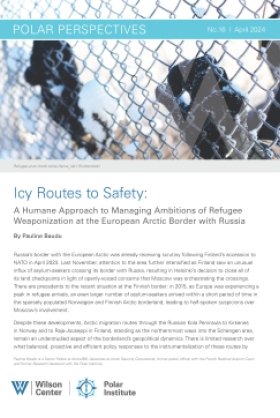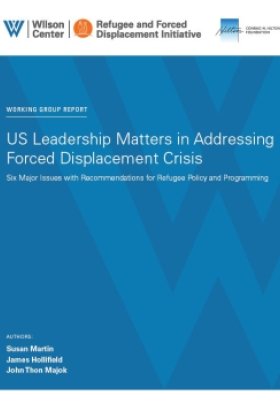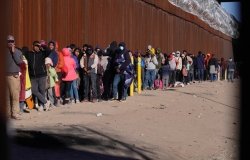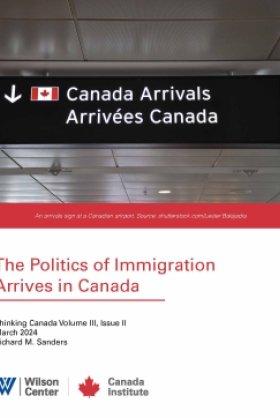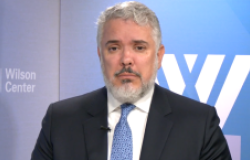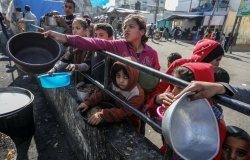Development is the Ultimate Deterrent to Excessive Migration
Development is the ultimate deterrence strategy, as people who have access to economic opportunities, security, education and health services are far less likely to leave than those who do not.
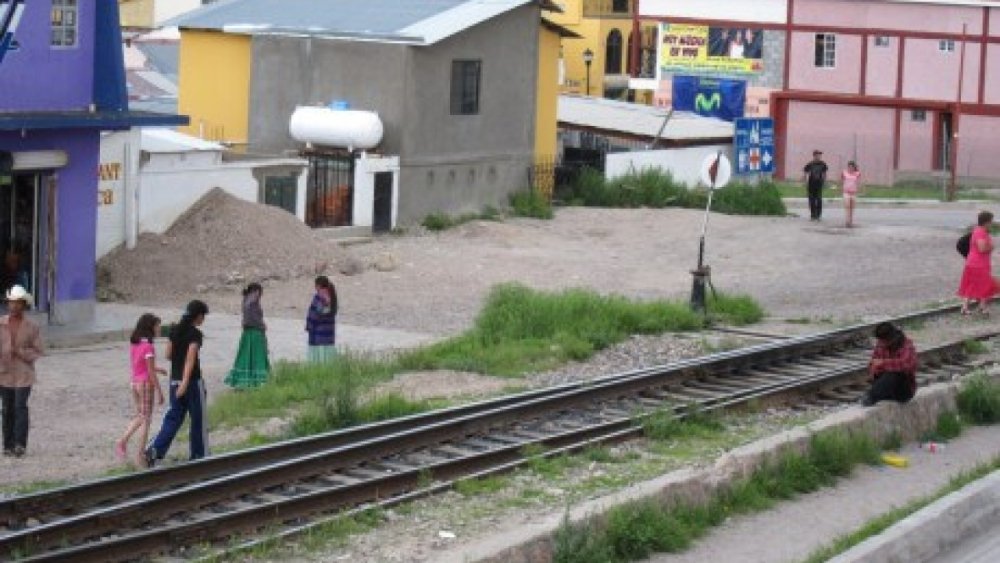
This article was originally published on The Hill.com...
On Oct. 4, Mexican President-elect Andres Manuel Lopez Obrador (AMLO) and President Trump had a phone call discussing an investment plan between Mexico, Canada and the United States to aid economic development in Central America and Mexico, with the aim to reduce the flows of illegal migration.
AMLO stated the plan would require over $30 billion in total investments. This plan falls in line with AMLO’s campaign promises to boost economic development in southern Mexico and Central America to lower the rates of migration.
This tentative plan comes less than a month after the Trump administration put forth a proposal to give Mexico $20 million in aid to assist in removals of migrants from Mexico. AMLO’s team rejected the funding, stating that it was not necessary.
There were predictions that Mexico and the U.S. could be on the way to serious conflict in their approach to migration; the Trump administration has implemented strict immigration policies that the Mexican leader has often condemned.
There are deep structural forces driving people out of the Northern Triangle (Guatemala Honduras and El Salvador) — endemic poverty, corruption and serious security concerns due to gang violence, famine and drought, to name a few.
Yet, Mexico has been a reliable and committed partner to the U.S. in terms of security and border enforcement in the past and can be the same dependable and committed partner in economic development as well if the U.S. is willing to find common ground with the incoming Mexican government’s priorities.
Currently, Mexico’s Agency for International Development Cooperation (AMEXID) has Central America as a regional priority, pursuing South-South and Triangular development cooperation as a main strategy. In fiscal year (FY) 2017, the Mexican government allocated $24,684,855 to AMEXID funds, about 6 percent of the total budget for the External Relations Ministry.
For FY 18, U.S. Strategy for Engagement in Central America provided $165 million and about $153 million to Mexico in aid funding, predominantly for rule of law and security purposes. $30 billion is a significant increase in the funding provided to Central America from Mexico and the United States.
Yet, if both countries were able to invest in the region, they may see some surprising returns that could be more effective than the border enforcement deterrence and deportation strategy.
There are deep structural forces driving people out of the Northern Triangle (Guatemala Honduras and El Salvador) — endemic poverty, corruption and serious security concerns due to gang violence, famine and drought, to name a few.
Economic development has been traditionally seen in the U.S. as a strategy to address the push factors for migrants, as increased development can help alleviate poverty, increase access to markets, reduce food insecurity and build more resilient communities.
An economic development strategy may yield higher returns for Mexico and the U.S. than previously thought. The narrative around Central American migration has largely focused on the extreme and pervasive violence in the country perpetuated by gangs and other transnational crime organizations.
While this violence is quite real and does contribute to push factors, the latest data shows that under-development is playing a greater role in pushing many migrants to leave. According to U.S. Agency for International Development data, the number of Guatemalan migrants arrested at the U.S. border in 2018 nearly doubled.
There are an increasing number of migrants hailing from indigenous areas in the western highlands, where malnutrition rates exceed 65 percent, the highest in the Western Hemisphere.
U.S. Customs and Border Protection Commissioner Kevin McAleenan has stated migration from Guatemala is likely less due to violence and more because of food insecurity. While the homicide rates for El Salvador and Honduras remain some of the highest in the world, Guatemala’s murder rate has reached a 17-year low.
Investing in rural economic growth will only be truly successful if accompanied by other external factors such as favorable trade policies that allow producers to access the international market or increased government transparency and intergovernmental cooperation.
Economic development can also reduce the incentives for young men to join gangs, as one of the reasons for joining is gangs offer more money and status than many of the informal, agrarian or other lower-paying jobs in the region.
The economic development model is also not without its caveats. Primarily, broad-based growth takes a long time; the results of good economic development projects sometimes cannot be seen until many years after an administration is gone.
Development is also not a linear solution. Investing in rural economic growth will only be truly successful if accompanied by other external factors such as favorable trade policies that allow producers to access the international market or increased government transparency and intergovernmental cooperation.
Political alignment on the part of Central American governments is key to truly having an effective development strategy. The governments of the Northern Triangle would need to invest more robustly in anti-corruption measures, infrastructure, roads and institutions that accompany rural economic development.
Development is the ultimate deterrence strategy, as people who have access to economic opportunities, security, education and health services are far less likely to leave than those who do not.
Finally, it is important to recognize that economic development actually stimulates more migration in the short term as people’s incomes rise and have greater means to leave an undesirable situation.
It is a good thing if authorities across Central America and Southern Mexico begin to provide people with access to infrastructure, income, education, and freedom of movement, but it has a short-term cost that both administrations should bear in mind.
Despite the limitations of a development strategy, there is no solution more sustainable to address migratory flows. Development is the ultimate deterrence strategy, as people who have access to economic opportunities, security, education and health services are far less likely to leave than those who do not.
What would happen if both countries invested in other strategies that also deter migration, but have the positive benefit of making Mexico and Central America more prosperous and institutionally strengthened? We may just see some tangible results.
About the Author

Rachel Schmidtke
Advocate for Latin America, Refugees International

Mexico Institute
The Mexico Institute seeks to improve understanding, communication, and cooperation between Mexico and the United States by promoting original research, encouraging public discussion, and proposing policy options for enhancing the bilateral relationship. A binational Advisory Board, chaired by Luis Téllez and Earl Anthony Wayne, oversees the work of the Mexico Institute. Read more

